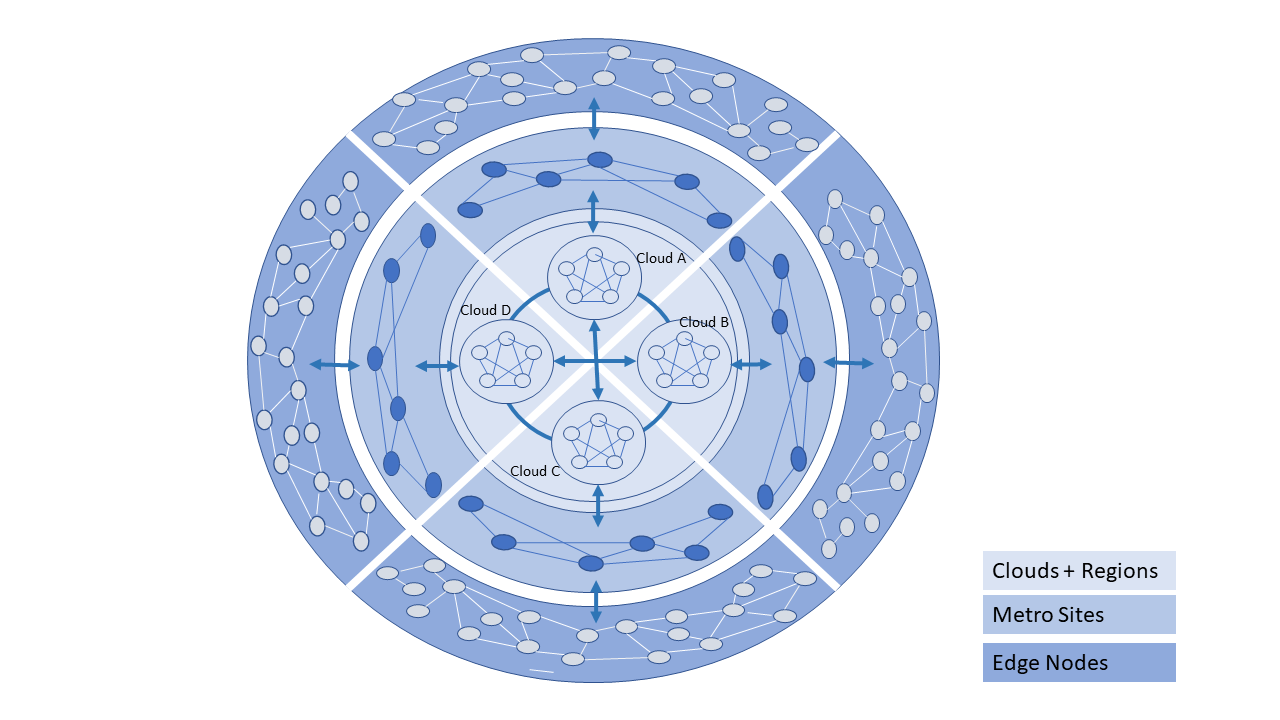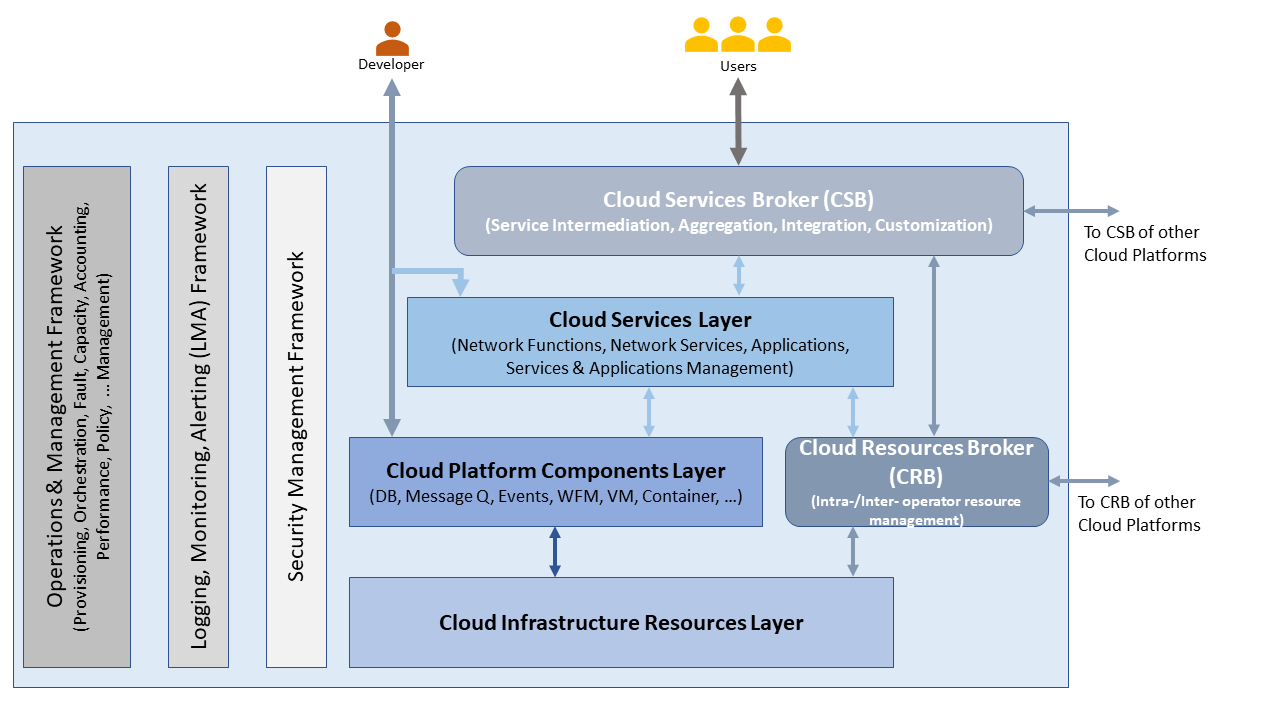
The GSMA whitepaper on "Operator Platform Concept Phase 1: Edge Cloud Computing" (January 2020) states, "Given the wide diversity of use cases that the operators will tasked to address, from healthcare to industrial IoT, it seems logical for operators to create a generic platform that can package the existing assets and capabilities (e.g., voice messaging, IP data services, billing, security, identity management, etc. ...) as well as the new ones that 5G makes available (e.g., Edge cloud, network slicing, etc.) in such a way as to create the necessary flexibility required by this new breed of enterprise customers."
Cloud computing has evolved and matured since 2010 when NIST (http://csrc.nist.gov/publications/nistpubs/800-145/SP800-145.pd) published its definition of cloud computing, with its 5 essential characteristics, 3 service models and 4 deployment models.
The generic model for an enterprise cloud has to be "hybrid" with the special cases of purely private or public clouds as subsets of the generic hybrid cloud deployment model. In a hybrid cloud deployment, at least two or more distinct cloud infrastructures are inter-connected together.
Cloud deployments can be created using a variety of technologies open-source (e.g., OpenStack, Kubernetes) and commercial technologies (e.g., VMware, AWS, Azure, etc.). A multi-cloud deployment can consist of the use of more than one technology.
A generic Telco cloud is an hybrid multi-cloud. A better designation would be a federation of clouds - a federated cloud:
a collection of cooperating, interoperable autonomous component clouds
In this section we will further explore the characteristics of the federated cloud, architecture and architecture building blocks that constitute the federated cloud. For example, a Telco Cloud that consists of 4 sub-clouds: Private on prem, Cloud Vendor provided on prem, Private outsourced (Commercial Cloud Provider such as an HCP), and Public outsourced (see diagram below). Such an implementation of a Telco Cloud allows for mix'n'match of price points, flexibility in market positioning and time to market, capacity with the objective of attaining near "unlimited" capacity, scaling within a sub-cloud or through bursting across sub-clouds, access to "local" capacity near user base, and access to specialised services.

The Figure below presents a visualisation of a Telco operator cloud (or simply, Telco cloud) with clouds and cloud components distributed across Regional Data Centers, Metro locations (such as Central Office or a Colocation site) and at the Edge, that are interconnected using a partial mesh network. Please note that at the Regional center level the interconnections are likely to be a "fuller" mesh while being a sparser mesh at the Edges.

| Type | System Developer | System Maintenance | System Operated & Managed by | Location where Deployed | Primary Resource Consumption Models |
|---|---|---|---|---|---|
| Private (Internal Users) | Open Source | Self/Vendor | Self/Vendor | On Prem | Reserved, Dedicated |
| Private | Vendor | HCP* | Self/Vendor | Self/Vendor | On Prem | Reserved, Dedicated |
| Public | Vendor | HCP | Self/Vendor | Self/Vendor | On Prem | Reserved, On Demand |
| Private | HCP | Vendor | Vendor | Vendor Locations | Reserved, Dedicated |
| Public (All Users) | HCP | Vendor | Vendor | Vendor Locations | On Demand, Reserved |
*HCP - Hyperscaler Cloud Provider
The Figure below shows a conceptual Telco Operator Platform Architecture. The Cloud Infrastructure Resources Layer exposes virtualised (including containerised) resources on the physical infrastructure resources and also consists of various virtualisation and management software (see details later in this chapter). The Cloud Platform Components Layer makes available both elementary and composite objects for use by application and service developers, and for use by Services during runtime. The Cloud Services Layer exposes the Services and Applications that are available to the Users; some of the Services and Applications may be sourced from or execute on other cloud platforms. Please note that while the architecture is shown as a set of layers, this is not an isolation mechanism and, thus, for example, Users may access the Cloud Infrastructure Resources directly without interacting with a Broker.
The Cloud Services and the Cloud Resources Brokers provide value-added services in addition to the fundamental capabilities like service and resource discovery. These Brokers are critical for a multi-cloud environment to function and utilise cloud specific plugins to perform the necessary activities. These Brokers can, for example, provision and manage environments with resources and services for Machine Learning (ML) services, Augmented/Virtual Reality, or specific industries.

Note: The functions shown on the left are not intended to represent that there is a single, say, integrated security framework across the layers
PowerPoint Files:
Conceptual Architecture
Multi Hybrid Cloud